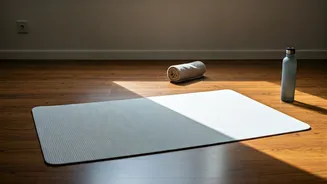Why Kegels Matter
The 5-second exercise discussed in this article pertains to Kegel exercises, crucial for women's pelvic floor health. These muscles play a pivotal role
in bladder control, sexual function, and overall core stability. Strengthening the pelvic floor can prevent or alleviate issues like urinary incontinence, improve sexual satisfaction, and enhance core strength. Kegels are a versatile exercise, beneficial for women of all ages, including pregnant women, postpartum mothers, and those experiencing the onset of menopause. They can be performed discreetly and at any time, making them a practical addition to your routine. Regular practice is key to reaping the benefits of increased pelvic floor strength and function, contributing to better bladder control and enhancing sexual wellness. This simple exercise, when done correctly, can significantly improve the quality of life.
Who Benefits Most?
While Kegel exercises are universally beneficial, certain groups of women stand to gain the most from them. Pregnant women often experience weakened pelvic floor muscles due to the added weight and pressure, making Kegels a vital practice for supporting the bladder and preventing incontinence. Postpartum mothers can restore pelvic floor strength, which is essential after childbirth. Women going through menopause may experience weakening of the pelvic floor muscles due to hormonal changes, and Kegels can help mitigate these effects. Athletes, especially those involved in high-impact activities, can find that strengthening their pelvic floor enhances core stability and athletic performance. The exercise is also useful for women who have had pelvic surgery. Essentially, Kegels are safe for almost everyone, provided they are performed correctly, and consulting with a healthcare professional can give tailored advice.
Who Should Avoid It?
While generally safe, there are specific circumstances where Kegel exercises might not be suitable, or require caution. Women who experience pelvic pain, or have certain medical conditions affecting the pelvic region, should consult a healthcare provider before starting Kegel exercises. If you're unsure about whether you're performing the exercise correctly, seeking guidance from a physical therapist or a specialist can be valuable. Overdoing Kegels can lead to muscle fatigue and potentially worsen certain symptoms. In such cases, it's wise to decrease the frequency or duration of the exercises and consult with a doctor. Always listen to your body and adjust the practice accordingly. The goal is to strengthen the pelvic floor muscles gently and consistently, so it's essential to avoid pushing yourself beyond your comfort level.
The 5-Second Technique
Performing the 5-second Kegel exercise correctly is essential for achieving the desired results. First, locate the correct muscles by imagining you're trying to stop the flow of urine, or prevent gas from escaping. Focus on squeezing these muscles, and be sure to avoid contracting your abdominal, buttock, or thigh muscles. Once you have isolated the correct muscles, contract them for 5 seconds. Relax for 5 seconds. Repeat this cycle 10 to 15 times, several times a day. Consistency is the key. You can do Kegels while sitting, standing, or lying down. With practice, you will develop better control over your pelvic floor muscles. It is important to breathe normally during the exercise. Do not hold your breath. Regular practice will lead to improved strength, and better control over your pelvic floor muscles. You can track your progress as you become more accustomed to the exercise.














